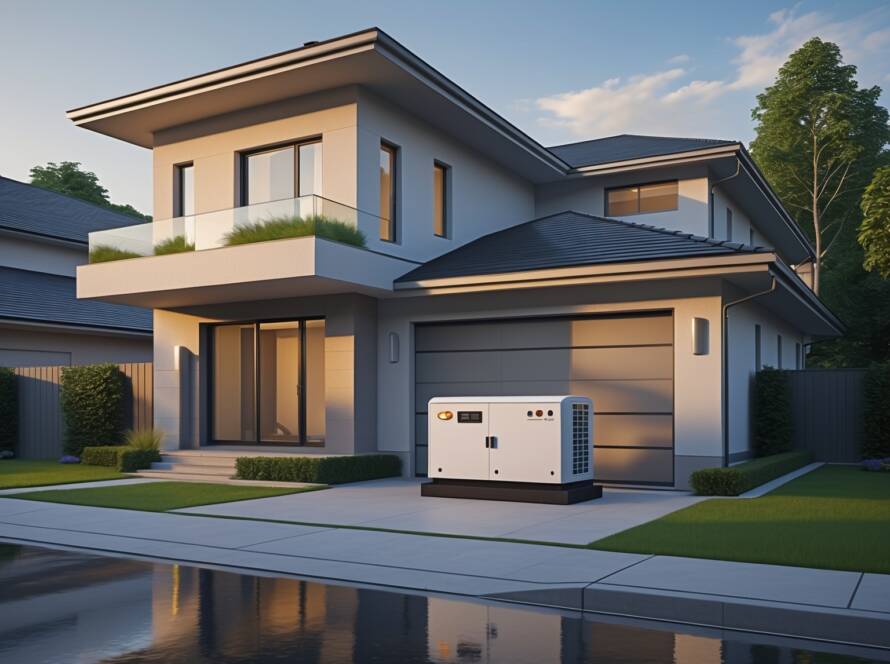kitchen recessed ceiling lights – Discover how kitchen recessed ceiling lights can revolutionize your cooking space with precise, elegant illumination. As trusted electrical experts, we’ll guide you through selecting and installing these versatile fixtures that combine functionality with style, creating the perfect balance of task and ambient lighting for your culinary haven.
Understanding Modern Downlight Systems
Here’s the chapter on Understanding Modern Downlight Systems, crafted according to Daliran Electric’s professional yet approachable brand voice:
kitchen recessed ceiling lights , also known as downlights or pot lights, represent the cornerstone of contemporary kitchen illumination. These fixtures integrate seamlessly into your ceiling, creating an elegant, unobtrusive lighting solution that transforms any kitchen space. The clean, minimalist appearance achieved without hanging fixtures makes recessed lighting particularly appealing for modern home designs, where streamlined aesthetics meet functional excellence.
Modern downlight systems consist of three essential components working in harmony:
- Housing: The recessed canister installed above the ceiling, engineered to ensure proper heat dissipation and structural integrity. Modern housings feature IC (Insulation Contact) ratings, ensuring safe installation even when in direct contact with insulation.
- Trim: The visible portion of the fixture that sits flush with your ceiling. Today’s trims come in various styles, from basic baffle designs that reduce glare to adjustable eyeball trims that allow for directional lighting over key work areas.
- Bulb: LED technology has revolutionized recessed lighting, offering superior energy efficiency, longer lifespan, and improved color rendering. Modern LED modules can last up to 50,000 hours while consuming significantly less power than traditional halogen alternatives.
kitchen ceiling can lights – One of the most significant advantages of kitchen recessed lights is their ability to provide even light distribution across countertops. This eliminates harsh shadows that can make food preparation challenging and creates a welcoming atmosphere for family gatherings. The strategic placement of these fixtures allows for customizable lighting zones, enabling you to adjust illumination levels for different activities – from intense task lighting over cooking areas to subtle ambient lighting for dining.
For homeowners considering a kitchen lighting upgrade, modern recessed fixtures offer remarkable versatility. Their slim profile works exceptionally well in both new construction and retrofit applications, while dimming capabilities provide the flexibility to transition from bright task lighting to subtle mood lighting. When properly installed by certified professionals, these systems deliver optimal illumination while maintaining rigid safety standards and energy efficiency requirements.
kitchen recessed ceiling lights – The integration of recessed lighting with modern smart home systems has added another layer of sophistication. Many contemporary fixtures can now be controlled via smartphone apps or voice commands, allowing for seamless adjustment of brightness levels and color temperatures to match your activities or time of day. This technological advancement, combined with the timeless efficiency of recessed lighting design, makes these fixtures an invaluable addition to any modern kitchen renovation project.
Smart Planning for Kitchen Lighting Layout
Here’s the chapter text following your guidelines:
Strategic planning transforms ordinary kitchen ceiling can lights into an exceptional illumination system that enhances both functionality and ambiance. Professional electricians at Daliran Electric understand that proper layout planning begins with a comprehensive assessment of your kitchen’s dimensions and workflow patterns. For optimal task lighting, we recommend installing one recessed light fixture for every 4-6 square feet in crucial work areas, ensuring you never struggle with shadows while preparing meals or reading recipes.
When mapping out your kitchen ceiling lights, careful consideration of spacing becomes paramount. The general rule suggests positioning recessed lights approximately 24-30 inches from walls and maintaining 4-6 feet between fixtures, depending on ceiling height and light output. This systematic approach eliminates dark spots while providing uniform illumination across your kitchen space.
Your kitchen’s work zones deserve special attention when planning recessed downlight placement. Critical areas include:
- Countertop spaces requiring focused task lighting
- Kitchen island perimeters for both functional and aesthetic illumination
- Sink areas where shadow-free lighting is essential
- Cooking zones requiring enhanced visibility
Professional installation of kitchen pot lights involves more than just aesthetic considerations. Our certified electricians ensure your lighting layout complies with local electrical codes while optimizing energy efficiency. We carefully evaluate ceiling joist locations, insulation requirements, and existing electrical infrastructure to create a installation plan that’s both practical and code-compliant.
The strategic positioning of recessed ceiling fixtures should also account for natural light sources. By analyzing how daylight interacts with your kitchen throughout the day, we can position your recessed lights to complement natural illumination and maintain consistent lighting levels. This thoughtful integration helps reduce energy consumption while ensuring your kitchen remains well-lit regardless of the time of day.
For larger kitchens, we recommend creating distinct lighting zones that can be controlled independently. This layered approach to kitchen ceiling lighting allows you to adjust illumination levels based on specific activities or time of day, enhancing both functionality and energy efficiency. Remember, each lighting zone should maintain the recommended spacing and coverage guidelines while working harmoniously with adjacent areas.
Selecting the Right Components
Transforming your kitchen with the perfect recessed ceiling lights starts with selecting components that align with both functionality and style. Today’s market offers an impressive array of options, each engineered to meet specific needs and installation scenarios.
kitchen recessed ceiling lights – When evaluating housing types, the distinction between IC-rated and non-IC rated fixtures is crucial. IC-rated housings are essential when insulation directly contacts the fixture, particularly common in modern energy-efficient homes with insulated ceilings. These housings include thermal protection to prevent overheating, ensuring both safety and compliance with building codes. Non-IC rated options, while more affordable, require a minimum 3-inch clearance from insulation and are typically suitable for uninsulated ceiling spaces.
The trim selection dramatically influences your kitchen’s visual appeal. Contemporary kitchens often benefit from sleek baffle trims that minimize glare while providing focused illumination. Reflector trims maximize light output, ideal for task-specific areas like food prep stations. For a seamless look, consider adjustable eyeball trims that direct light precisely where needed while maintaining a clean ceiling appearance. Modern floating square trims offer an architectural edge that complements minimalist designs.
LED technology has revolutionized recessed lighting, offering unprecedented energy efficiency and longevity. Today’s LED recessed lights deliver up to 50,000 hours of operation while consuming significantly less power than traditional alternatives. Look for options with color temperature selection capabilities, allowing you to switch between warm white (2700K-3000K) for ambient lighting and cooler whites (3500K-4000K) for task-focused illumination.
kitchen recessed ceiling lights – Dimming functionality adds versatility to your kitchen lighting scheme. Modern LED-compatible dimmers offer smooth, flicker-free performance from 100% to as low as 1% brightness. When selecting components, ensure compatibility between your LED fixtures and dimming controls to avoid issues like buzzing or inconsistent light levels. Many contemporary options include built-in dimming modules that eliminate the need for separate dimming systems.
kitchen recessed ceiling lights – Integrating smart features elevates your recessed lighting system further. Consider fixtures with built-in wireless connectivity that enable integration with home automation systems. These advanced units allow precise control over brightness levels and can be programmed to adjust automatically based on time of day or specific cooking tasks.
The market now offers retrofit LED modules that simplify upgrading existing recessed fixtures. These all-in-one units combine the LED light source, trim, and heat management system in a single component that installs directly into most standard housings. This approach provides an efficient pathway to modernize older recessed lighting while maintaining the kitchen’s aesthetic cohesion.
kitchen recessed ceiling lights – Energy efficiency ratings deserve careful attention during component selection. Look for ENERGY STAR certified fixtures that meet strict efficiency guidelines while delivering superior light quality. These units typically save 70-90% in energy costs compared to traditional incandescent options, making them an intelligent investment for modern kitchens.
Professional Installation and Safety
Here’s the chapter focusing on professional installation and safety for kitchen recessed lighting:
When it comes to installing kitchen recessed ceiling lights, professional expertise isn’t just a recommendation—it’s a necessity for both safety and optimal performance. While DIY projects can be tempting, the complexity of recessed lighting installation requires specialized knowledge and experience that only qualified electricians can provide.
First and foremost, professional electricians conduct thorough electrical load calculations to ensure your kitchen’s circuit can handle the additional lighting fixtures. This crucial step prevents overloading, which could lead to tripped breakers or, worse, electrical fires. They’ll assess your existing electrical infrastructure and determine if upgrades are needed to support your new recessed ceiling lights.
Precise placement of kitchen ceiling can lights demands careful planning and execution. Professional installers use industry-standard spacing calculations and advanced measuring techniques to create uniform illumination across your kitchen workspace. They consider factors like:
- Task areas requiring focused lighting
- Shadow elimination between fixtures
- Optimal distance from walls and cabinets
- Proper spacing between each recessed light
Safety compliance is another critical aspect where professional expertise shines. Licensed electricians ensure your recessed kitchen lighting installation meets all local building codes and safety standards. This includes:
- Using appropriate fire-rated housing in ceiling spaces
- Installing proper vapor barriers for insulated ceilings
- Ensuring correct wire sizing and connections
- Implementing proper grounding techniques
kitchen recessed ceiling lights – Integration with your existing electrical system requires skilled coordination. Professionals can seamlessly incorporate your new kitchen pot lights with existing circuits, switches, and home automation systems. They’ll also ensure proper installation of dimming controls and compatibility with LED drivers, preventing common issues like flickering or premature bulb failure.
The value of professional installation extends beyond initial setup. Licensed electricians provide warranties for their work, offering peace of mind and protection for your investment. They can also advise on maintenance requirements and optimal settings for your new lighting system, ensuring long-term performance and energy efficiency.
kitchen recessed ceiling lights – Remember, proper installation of recessed ceiling lights in your kitchen involves working with live electrical connections, often in tight ceiling spaces. Professional electricians have the tools, training, and safety equipment to handle these challenges while protecting your home and family. They’ll also ensure proper insulation clearance and heat dissipation, preventing potential fire hazards that can arise from improper installation.
Conclusions kitchen recessed ceiling lights
Kitchen recessed ceiling lights offer the perfect blend of functionality and style for modern homes. With proper planning, quality components, and professional installation, these lighting solutions transform your kitchen into a well-lit, energy-efficient space that enhances both cooking activities and overall ambiance.



